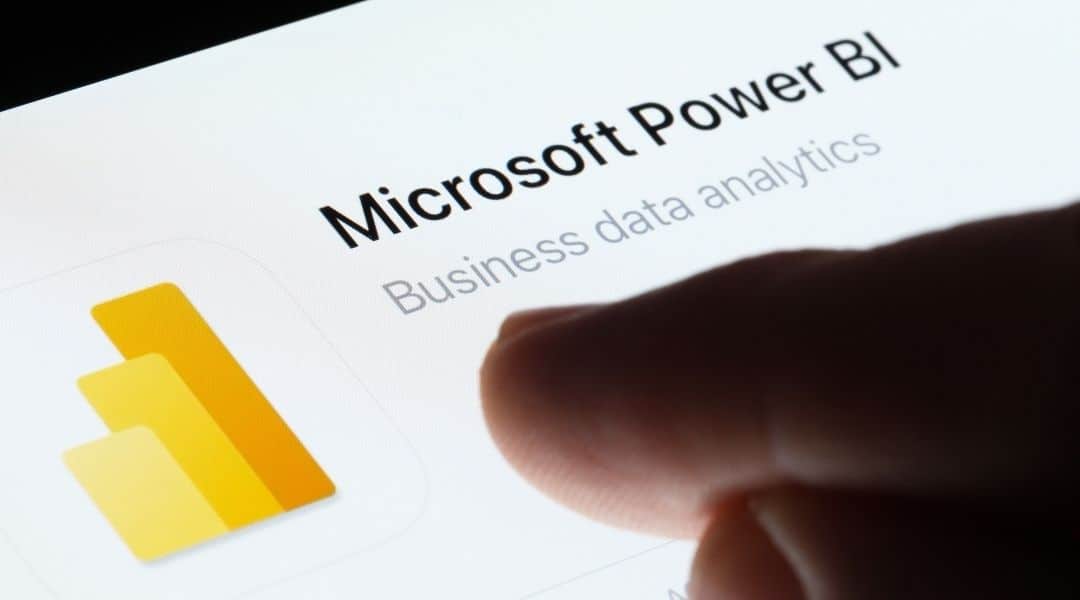What is IT Monitoring?
What is IT Monitoring?
IT monitoring refers to all the tools and practices used to monitor the health of an IT system in real time. Its objectives include:
- Prevention: Identifying incidents and anomalies before they have an impact on users.
- Availability: Guaranteeing the continuous operation of critical services.
- Responsiveness: Enabling rapid or even immediate intervention in the event of an incident.
- Performance: Optimising resources and improving the speed of systems and applications.
- Security: Detect abnormal behaviour, prevent intrusions and strengthen cyber defence.
- Scalability: Anticipate future needs and adapt the infrastructure.
- User experience: Offer reliable, high-performance services.
- Cost reduction: Limit interruptions and optimise IT costs.
- Compliance: Ensure traceability to meet regulatory standards.
Why should companies monitor their IT systems?
Failure to implement adequate IT monitoring within a company can lead to significant financial losses and have critical consequences for the business as a whole.
In an environment that’s highly competitive, the performance and availability of IT systems are key differentiating factors. A company that fails to optimise the quality of its digital services risks degrading the user experience, losing the confidence of its users and, as a result, seeing its market share fall. Undetected interruptions, slowness or technical failures can quickly generate dissatisfaction and damage a company’s reputation.
What’s more, the absence of monitoring often leads to hidden costs: emergency interventions, loss of productivity, wasted resources and oversized infrastructures. A high-performance monitoring system makes it possible to anticipate incidents, reduce downtime and optimise resource allocation, generating substantial savings.
Furthermore, a lack of monitoring leaves companies exposed to increased IT security risks. Without supervision, attempts at intrusion, abnormal behaviour or data leaks can go undetected, compromising the confidentiality and integrity of sensitive information. This lack of vigilance can also lead to legal penalties for non-compliance with regulatory obligations (GPDR, sector standards, etc.), and damage the company’s image in the eyes of its partners and customers.
In short, monitoring your IT system is essential to guarantee business continuity, customer satisfaction, cost control and regulatory compliance.
What should IT monitoring cover?
Local and cloud infrastructures
Whether for local or cloud environments, effective infrastructure monitoring must cover: system resources, networks, connectivity, storage, databases, security, containers and orchestrators, applications, and also the performance, availability, consumption and the costs associated.
Critical applications and business software
Certain applications and business software are critical to a company’s activity and must therefore be subject to reinforced monitoring. These include business applications (ERP, CRM, HRIS), messaging systems, document management tools, web and e-commerce applications, cybersecurity solutions (SIEM, antivirus, VPN), and also sector-specific software (healthcare, industry, finance).
System performance
To monitor IT performance effectively, companies need to keep an eye on key indicators relating to system resources (e.g. CPU, memory, disk, temperature), the network (e.g. latency, bandwidth, packet losses), applications (e.g. response times, error rates, logs), databases (e.g. slow queries, connections, disk space) and load trends (e.g. peaks in activity, changes in usage).
Securing data
To secure its data, an organisation needs to continuously monitor access (e.g. failed attempts, elevation of privileges, administrator access), changes to sensitive files, unusual activity on storage systems, network security alerts (e.g. antivirus, EDR, port openings, suspicious traffic), and security logs (e.g. anomalies, log modifications). In cloud environments, it is crucial to track IAM modifications, API/jeton usage and external file shares.
What are the benefits of IT monitoring?
Reduced downtime
IT monitoring enables anomalies and potential faults in the IT infrastructure to be detected at an early stage. By continuously monitoring critical resources, it anticipates breakdowns and avoids costly interruptions that could negatively affect productivity or business operations. This ability to intervene before a problem becomes critical significantly reduces downtime and improves service continuity.
Better performance management
Thanks to its constant monitoring of system performance, IT monitoring ensures that you can keep an eye on every aspect of resource utilisation (processor, memory, storage, network, etc.). It enables trends to be sketched out based on historical performance data, bottlenecks to be identified quickly and resource allocation to be optimised, to guarantee maximum operational efficiency. This proactive management improves the user experience and enables investments to be adjusted in line with real needs.
Incident prevention
IT monitoring plays a key role in incident prevention by detecting abnormal behaviour or early warning signs of breakdowns at an early stage. Thanks to automated alerts, IT teams can intervene quickly to correct anomalies, thereby limiting the risk of small problems escalating into major incidents. This preventive approach strengthens the security and reliability of the information system.
Real-time monitoring
IT monitoring provides real-time monitoring by continuously collecting, analysing and displaying system data. Thanks to dynamic dashboards and automated alerts, it enables anomalies to be detected quickly, reaction times to be reduced and supervision to be centralised. It also supports instant decision-making, to maintain service availability.
What are the best IT monitoring tools?
Open source tools vs. proprietary solutions: how to choose?
The choice between open source IT monitoring tools and proprietary solutions depends mainly on the company’s needs, budget and internal skills.
Open source tools stand out in particular because they are free (or low-cost) and can be customised to meet the needs of the business. However, using them requires in-house skills, so that the business can deploy, upgrade and maintain the solution, while also implementing advanced intelligence features. These tools are often used by SMEs with a competent IT team, and also for pilot projects or technology laboratories.
In contrast, proprietary solutions can be expensive (what with the cost of licences, subscriptions and support), and the degree of customisation they offer is sometimes limited, but these solutions are much easier to deploy and maintain because the company can rely on the resources, knowledge and skills of the supplier. What’s more, they often have more modern, user-friendly interfaces. These solutions are frequently chosen by large companies, particularly when they have a strong need for SLAs.
Integrating IT monitoring in a DevOps environment
In a DevOps context, IT monitoring must be integrated into every stage of the software lifecycle, from design to production. Monitoring tools must be compatible with automation and CI/CD pipelines, and allow for continuous monitoring of applications, infrastructures and services. For example, the ‘shift-left’ approach involves integrating monitoring right from the development and testing phases, in order to detect anomalies quickly and improve the quality of deliverables.
DevOps monitoring encourages collaboration between development and operations teams, thanks to real-time alerts, shared dashboards and centralised incident management. Modern tools such as Grafana and Elastic Stack are designed in such a way that they can easily be integrated into this ecosystem, allowing for monitoring that is fine-grained, automated and scalable, something that is vital when it comes to responding to the speed and complexity of cloud and microservices environments.
Best practices for successful IT monitoring
Defining relevant indicators
The first step in successful IT monitoring is to select the key performance indicators (KPIs) that are best suited to the organisation’s objectives and specific characteristics. It is essential to be selective and avoid using an excessive number of unnecessary metrics that could drown out the information that’s relevant. The most effective KPIs include service availability, mean time to resolve incidents, mean time between breakdowns and online application performance. These indicators must be aligned with business expectations and service level agreements (SLAs), to ensure that the monitoring meets the strategically important challenges that the company faces.
Next, you need to ensure that these KPIs and the associated objectives are clearly formulated, and one way to do this is by using the SMART method. When they are clear, they enable teams to aim for the same goal, to prioritise actions independently and to make decisions in an objective manner.
Automate alerts and performance reports
Automation is an essential lever for improving responsiveness and efficiency.
Setting up intelligent alerts, based on customised thresholds, means that IT teams can immediately be informed about any anomalies or critical overruns. This guarantees 24/7 monitoring and facilitates rapid intervention, before problems affect users or operations.
Similarly, automated performance reporting provides regular, objective analysis of system status, while freeing up time for teams. Automated reports can identify trends, anticipate resource requirements and guide strategic decision-making. The integration of advanced analyses, and even artificial intelligence, can enhance the ability to detect incidents at an early stage and suggest appropriate corrective action
Adapting monitoring to cloud and hybrid architectures
As cloud and hybrid environments become more widespread, it is crucial to adapt monitoring practices to these complex, distributed architectures. Here are a few recommendations:
- Use consistent metrics across all platforms, automate data collection and continuously monitor each component. You need tools that can trace requests end-to-end, monitor inter-service latencies and correlate logs, metrics and traces.
- Use all-in-one tools that are capable of providing a unified view of all resources, to facilitate overall management.
- Add security and compliance controls that are specific to cloud environments.
How does Qim Info help you implement IT monitoring?
Qim Info offers companies tailor-made support in setting up high-performance IT monitoring. After defining your monitoring needs and constraints, we can carry out an audit of your information system and guide you towards an IT monitoring strategy tailored to your organisation. We can then help you implement the strategy (installing the tools you have chosen, configuring the dashboards and intelligent alerts, training your teams) and ensure that you get the most out of your IT monitoring.
Don’t hesitate to contact us so that we can go over your project together.
FAQs
What is the difference between IT monitoring and observability?
Observability goes beyond IT monitoring: monitoring detects and reports anomalies using predefined metrics, whereas observability provides an in-depth understanding of the cause and context of problems, by analysing all the data generated by the system and enriching the analysis with logs, metrics and traces. We recommend reading Dynatrace’s detailed article on the subject to find out more.
What is the average cost of IT monitoring software?
The cost of IT monitoring software depends on the size of the infrastructure, the type of tool (open source or proprietary), its deployment method (cloud or on site) and its functionalities. Furthermore, when assessing the cost of implementing IT monitoring software, it is important not to forget indirect costs such as training, deployment, maintenance and any impact on the company’s existing ecosystem.
Open source solutions are free, but they can generate additional costs linked to support, hosting or integration services if you don’t have the resources in-house.
Examples of open source tools: Zabbix, Prometheus, Grafana, Nagios Core, Icinga, Centreon.
Pay-as-you-go solutions can be billed on the basis of a licence, at a flat rate (per host) or based on usage (per data volume). Some suppliers also charge for premium services (support, advanced modules, etc.). Costs can vary from a few dozen to several tens of thousands of Swiss francs per year.
Examples of chargeable solutions: PRTG, Datadog, Dynatrace, SolarWinds, New Relic, Splunk, AppDynamics, LogicMonitor.
How are automation and AIOps revolutionising IT monitoring?
Automation and AIOps are transforming IT monitoring by enabling proactive anomaly detection, a huge reduction in false positives, intelligent data analysis and automatic incident response, all of which improve the responsiveness and reliability of systems, reduce downtime and lighten the load on IT teams. Several tools, such as Dynatrace, offer AIOps.




